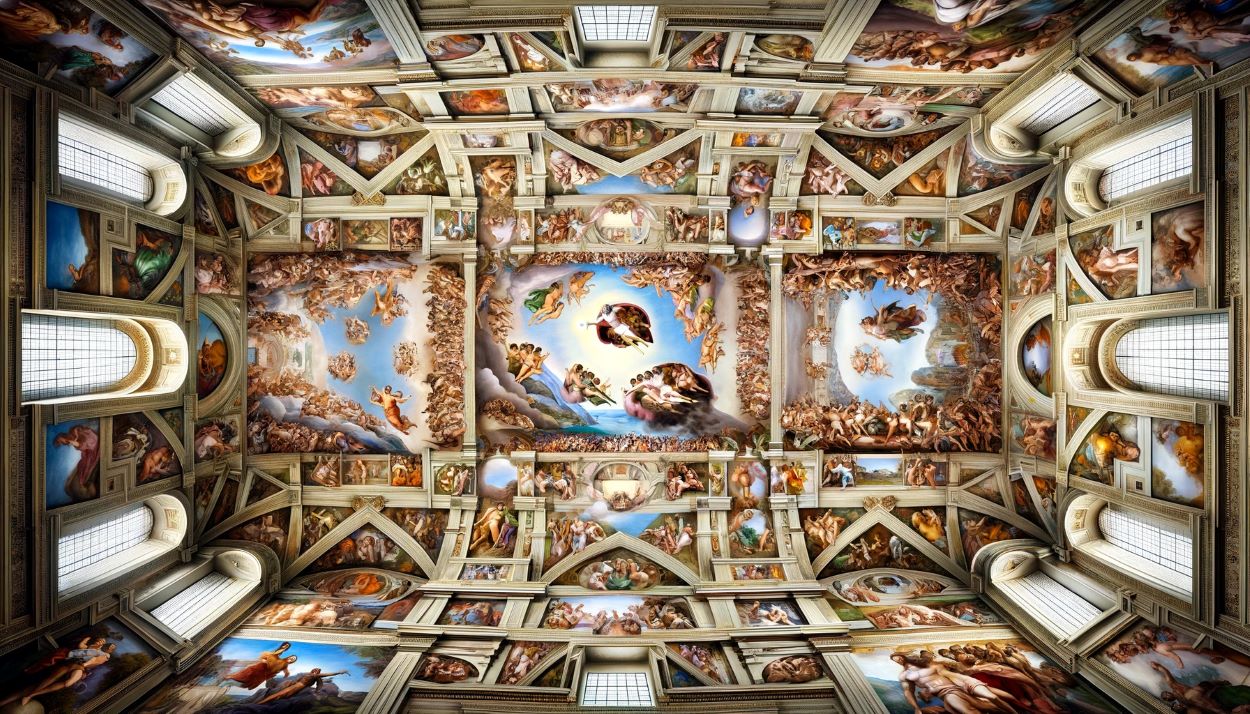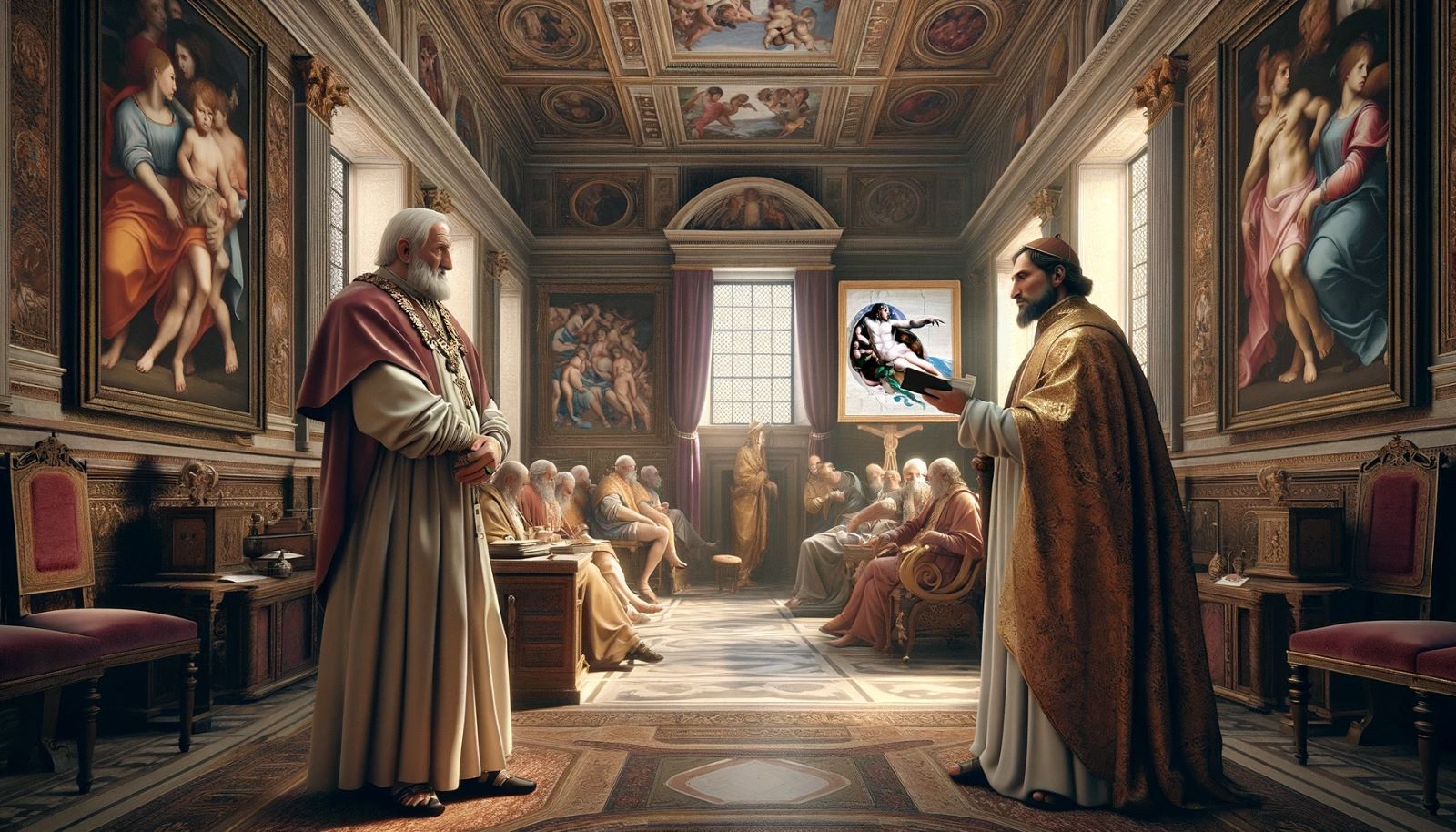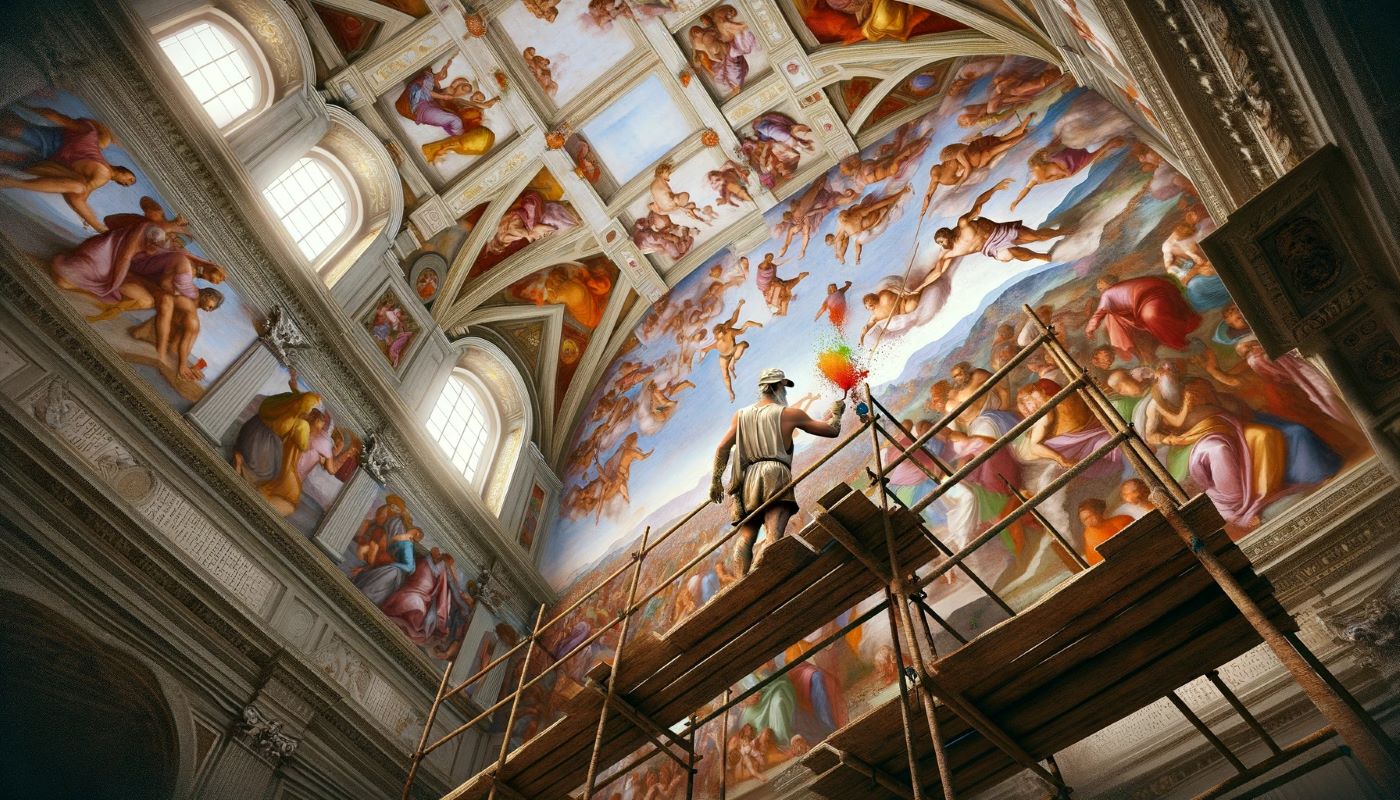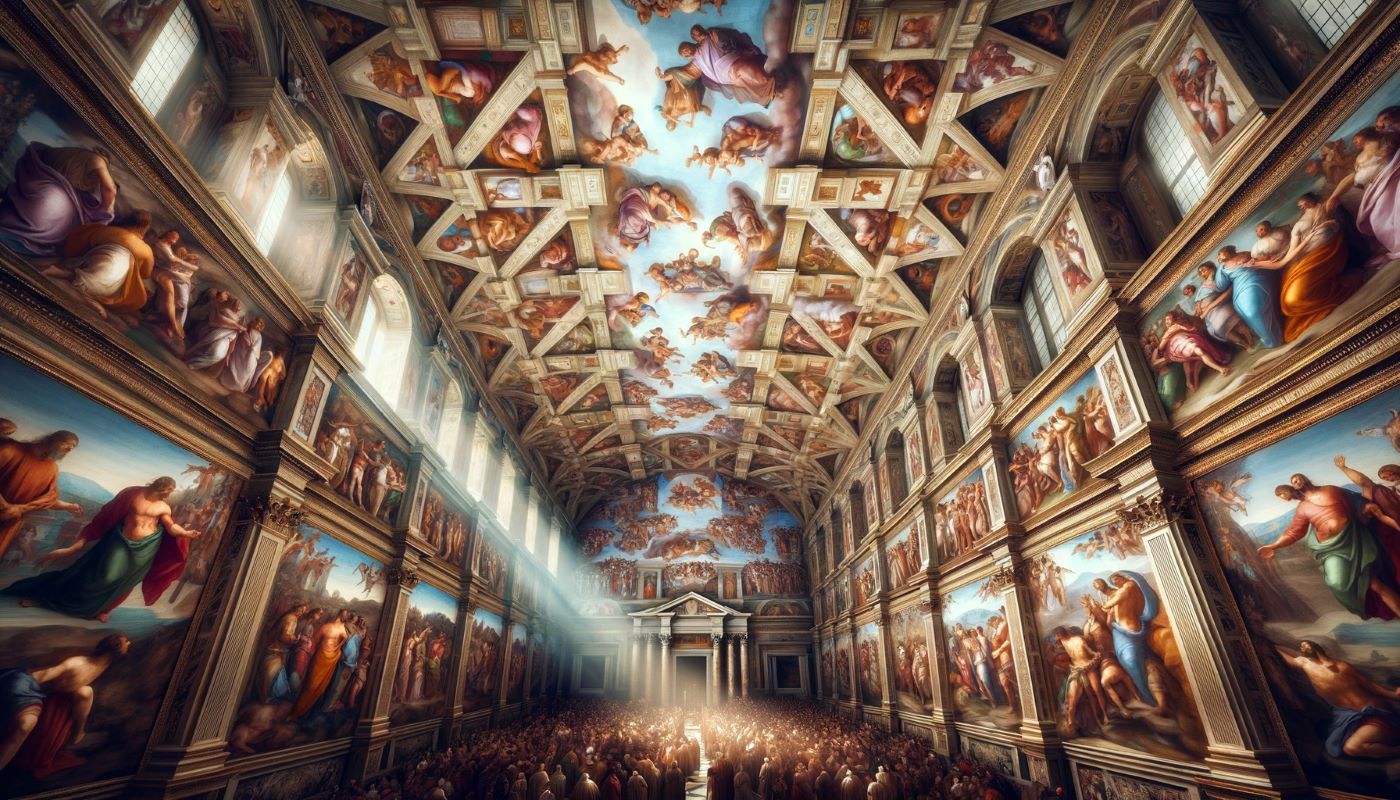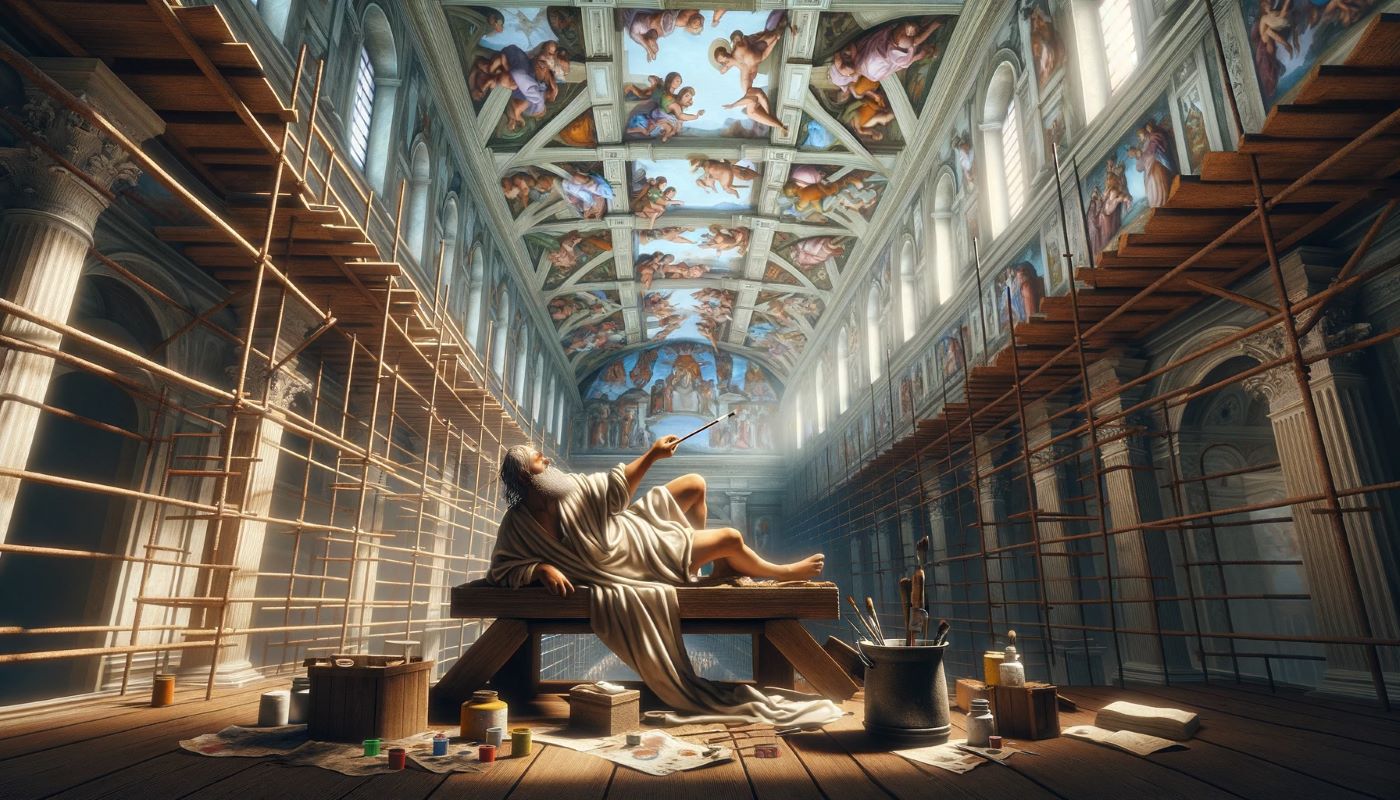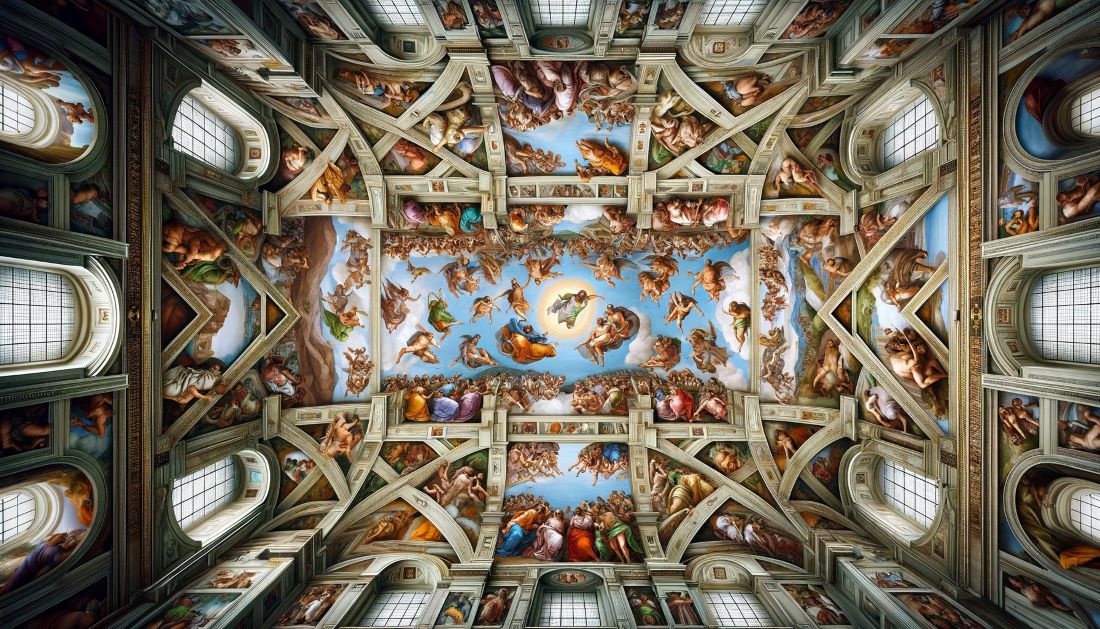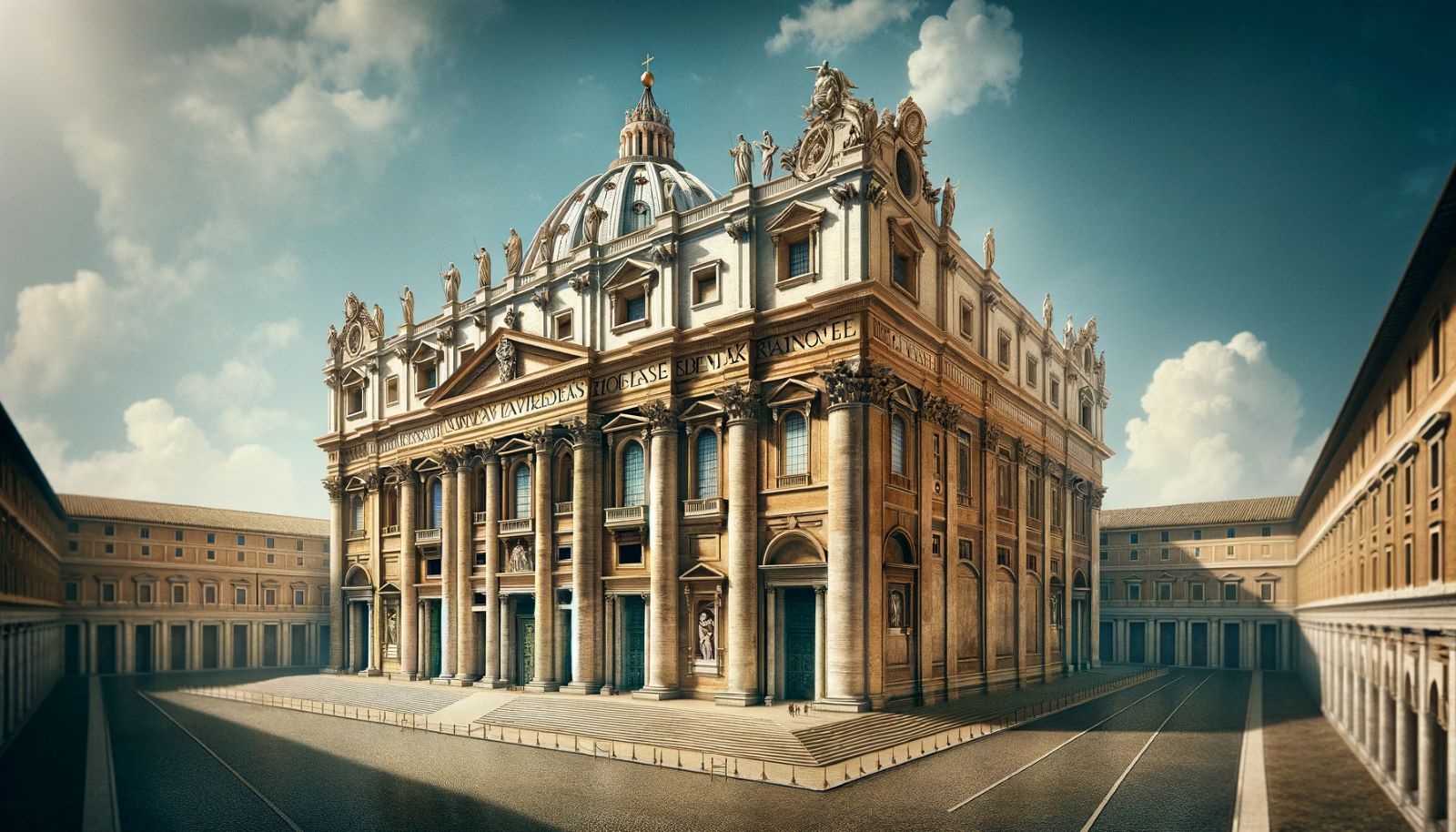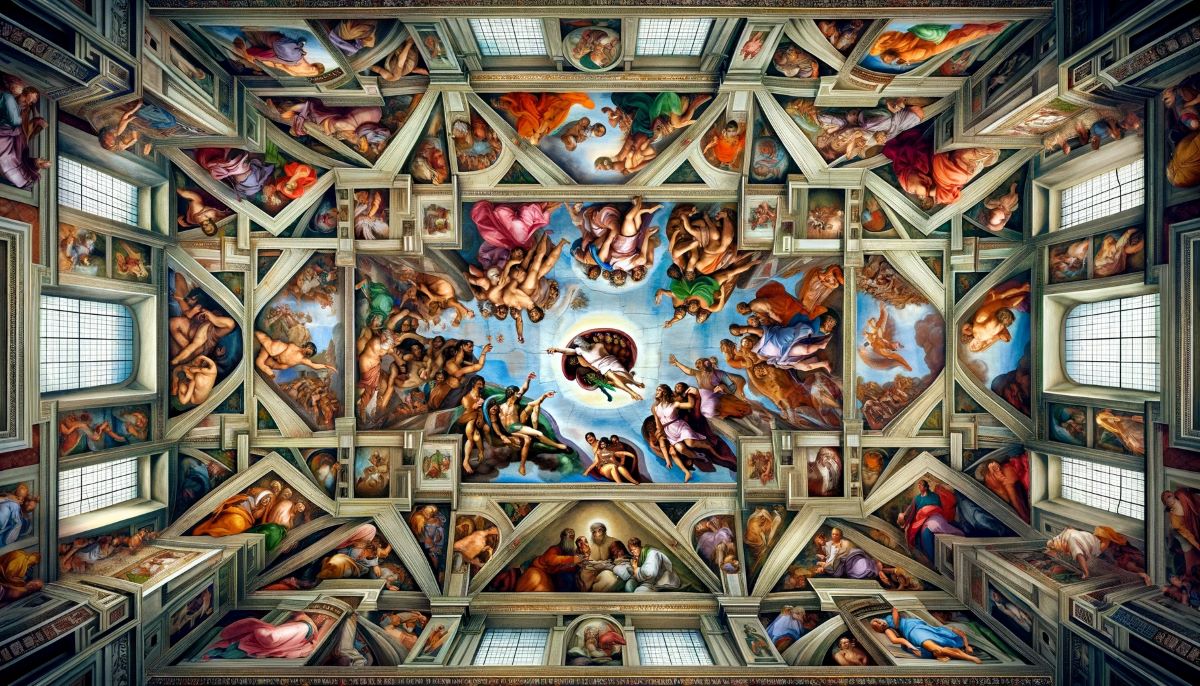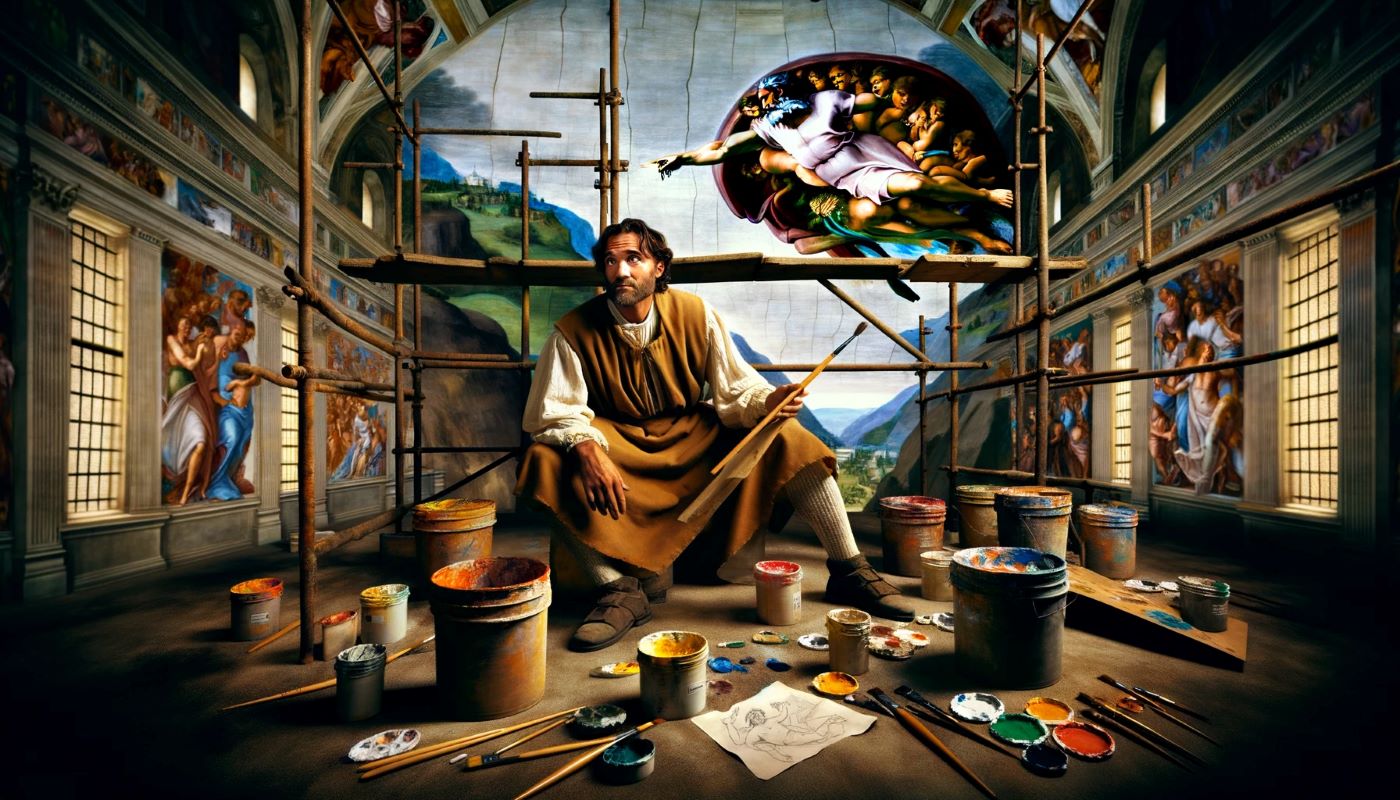Home>Arts and Culture>How Big Is The Sistine Chapel Ceiling


Arts and Culture
How Big Is The Sistine Chapel Ceiling
Published: March 4, 2024
Ericka Andersen, an editor at Christian.net, expertly merges digital strategy with content creation, focusing on faith and societal issues. Her communication skills enhance the platform's engaging narratives, fostering meaningful dialogue on belief's impact on society.
Discover the awe-inspiring dimensions of the Sistine Chapel ceiling and its significance in arts and culture. Explore the grandeur of Michelangelo's masterpiece and its impact on art history.
(Many of the links in this article redirect to a specific reviewed product. Your purchase of these products through affiliate links helps to generate commission for Christian.net, at no extra cost. Learn more)
Table of Contents
Introduction
How big is the Sistine Chapel ceiling? This question has intrigued art enthusiasts and religious pilgrims alike for centuries. The Sistine Chapel, located in Vatican City, is renowned for its breathtaking frescoes, particularly the ceiling painted by the legendary artist Michelangelo. The sheer scale and grandeur of the Sistine Chapel ceiling have captivated visitors from around the world, but just how large is this iconic masterpiece? In this article, we will delve into the history, dimensions, and artistic significance of the Sistine Chapel ceiling, shedding light on the monumental achievement that continues to inspire awe and wonder to this day.
History of the Sistine Chapel
-
The Sistine Chapel, named after Pope Sixtus IV, was built between 1473 and 1481. It was intended as a place for important papal ceremonies and gatherings. The chapel's significance in the Catholic Church made it an ideal location for the election of new popes, as well as for important religious ceremonies and events.
-
The construction of the Sistine Chapel was overseen by a team of talented architects, including Baccio Pontelli and Giovannino de Dolci. The chapel's architecture reflects the prevailing Renaissance style, characterized by its harmonious proportions and elegant design.
-
The interior of the Sistine Chapel was adorned with magnificent frescoes by some of the most celebrated artists of the time, including Botticelli, Perugino, and Ghirlandaio. These early frescoes provided the backdrop for Michelangelo's later masterpiece on the ceiling.
-
Over the centuries, the Sistine Chapel has served as a place of worship, artistic inspiration, and historical significance. Its walls and ceiling bear witness to the rich tapestry of religious and artistic expression that has defined the Catholic Church and the Renaissance era.
Michelangelo and the Creation of the Ceiling
-
Michelangelo Buonarroti, one of the most revered artists in history, was commissioned by Pope Julius II in 1508 to paint the ceiling of the Sistine Chapel. The project was a monumental undertaking, as Michelangelo was primarily known as a sculptor, not a painter. However, he accepted the challenge and dedicated four years of his life to creating one of the most extraordinary works of art the world has ever seen.
-
Michelangelo's vision for the ceiling was ambitious and revolutionary. He chose to depict scenes from the Book of Genesis, including the iconic portrayal of the Creation of Adam, where the hands of God and Adam almost touch. This depiction has become an enduring symbol of human potential and divine inspiration.
-
The process of painting the ceiling was physically demanding and mentally taxing. Michelangelo worked tirelessly, often lying on his back for hours at a time, to apply the frescoes to the ceiling. His mastery of perspective and anatomy, combined with his unparalleled creativity, resulted in a series of breathtaking tableaus that continue to astonish viewers to this day.
-
Despite the challenges he faced, Michelangelo's dedication and artistic genius shone through in every brushstroke. The Sistine Chapel ceiling stands as a testament to his unparalleled talent and unwavering commitment to his craft. It is a timeless masterpiece that has left an indelible mark on the world of art and continues to inspire and captivate countless individuals who gaze upon its awe-inspiring beauty.
Dimensions of the Sistine Chapel Ceiling
The Sistine Chapel ceiling spans approximately 5,600 square feet, making it one of the most expansive and awe-inspiring artistic achievements in history. The dimensions of the ceiling measure 134 feet long by 44 feet wide, creating a vast canvas for Michelangelo's masterful frescoes. The sheer scale of the ceiling allowed Michelangelo to unleash his creativity on an unprecedented level, filling the space with intricate details and monumental compositions that continue to astound visitors to the chapel.
The height of the Sistine Chapel ceiling varies, reaching its apex at around 68 feet above the chapel's floor. This towering expanse provided Michelangelo with a unique artistic challenge, as he had to carefully consider how the paintings would be viewed from below. Despite the technical difficulties posed by the lofty height, Michelangelo's skillful use of perspective and composition ensured that the frescoes could be appreciated from every vantage point within the chapel.
The dimensions of the Sistine Chapel ceiling not only speak to the physical size of the artwork but also to the monumental effort and dedication required to bring Michelangelo's vision to life. The vast expanse of the ceiling provided the artist with a grand stage on which to depict scenes from the Book of Genesis, infusing the space with profound religious and artistic significance. The dimensions of the Sistine Chapel ceiling, coupled with Michelangelo's unparalleled talent, resulted in a timeless masterpiece that continues to inspire and captivate audiences from around the world.
Artistic Techniques Used in the Ceiling
-
Fresco Painting: Michelangelo employed the technique of fresco painting to create the stunning compositions on the Sistine Chapel ceiling. This method involved applying pigments onto freshly laid plaster, allowing the colors to become an integral part of the surface. The use of fresco painting not only ensured the longevity of the artwork but also imbued the colors with a radiant, luminous quality that continues to dazzle viewers.
-
Underpainting and Layering: In his execution of the frescoes, Michelangelo utilized a meticulous process of underpainting and layering to achieve depth and richness in his compositions. He would first apply a base layer of paint, known as the underpainting, followed by subsequent layers to build up the details and tonal variations within the scenes. This painstaking approach resulted in a remarkable sense of three-dimensionality and lifelike quality in the figures and architectural elements depicted on the ceiling.
-
Foreshortening and Perspective: One of the most remarkable aspects of Michelangelo's work on the Sistine Chapel ceiling is his masterful use of foreshortening and perspective. By skillfully manipulating the proportions and angles of the figures and architectural elements, he created the illusion of depth and spatial coherence within the two-dimensional plane of the ceiling. This innovative use of perspective added a dynamic and immersive quality to the scenes, drawing viewers into the dramatic narratives unfolding above them.
-
Chiaroscuro and Modeling: Michelangelo's command of chiaroscuro, the interplay of light and shadow, and his adeptness at modeling forms with subtle gradations of light and dark, endowed the figures on the ceiling with a sense of sculptural solidity and emotional intensity. The interplay of light and shadow heightened the dramatic impact of the scenes, infusing them with a palpable sense of movement and vitality.
-
Symbolism and Iconography: Beyond the technical virtuosity displayed in his execution of the frescoes, Michelangelo infused the imagery on the Sistine Chapel ceiling with profound symbolism and iconography. Each scene and figure was imbued with layers of meaning, drawing from biblical narratives, classical allegories, and theological themes. This rich symbolism added an additional layer of complexity and significance to the artwork, inviting viewers to contemplate the deeper spiritual and philosophical dimensions embedded within the visual tapestry.
-
Color Palette and Harmony: The color palette employed by Michelangelo on the Sistine Chapel ceiling was characterized by a harmonious blend of rich, vibrant hues, ranging from deep earth tones to celestial blues and radiant golds. The careful orchestration of colors contributed to the overall unity and coherence of the compositions, creating a visually stunning and emotionally evocative experience for those beholding the artwork.
Michelangelo's innovative and masterful use of these artistic techniques on the Sistine Chapel ceiling elevated the frescoes to unprecedented heights of aesthetic and spiritual significance, cementing their status as a pinnacle of Renaissance art and a testament to the enduring power of human creativity and expression.
Read more: How Was The Sistine Chapel Restored
Restoration and Preservation Efforts
The Sistine Chapel ceiling has undergone several restoration and preservation efforts over the centuries to ensure its longevity and continued splendor. One of the most significant restoration projects took place between 1980 and 1994, led by a team of experts in art conservation and restoration. The primary goal of this extensive undertaking was to address the damage caused by centuries of dirt, grime, and previous restoration attempts, which had obscured the brilliance of Michelangelo's original frescoes.
The restoration process involved meticulous cleaning of the ceiling using a combination of solvents, poultices, and delicate manual techniques. Layers of soot, candle wax, and other pollutants were painstakingly removed, revealing the vibrant colors and intricate details that had been concealed for generations. Additionally, areas of flaking and deteriorated plaster were stabilized, and the frescoes were carefully retouched to reintegrate areas of loss and damage, ensuring the seamless continuity of the original compositions.
In addition to the physical restoration of the frescoes, efforts were made to improve the environmental conditions within the Sistine Chapel to prevent future deterioration. Advanced climate control systems were installed to regulate temperature, humidity, and air quality, creating a stable and protective environment for the priceless artwork. These measures were crucial in safeguarding the integrity of the frescoes and mitigating the impact of external factors on their long-term preservation.
The restoration and preservation efforts on the Sistine Chapel ceiling represented a monumental achievement in the field of art conservation, allowing visitors to experience Michelangelo's masterwork in all its glory. By ensuring the continued vitality and resilience of the frescoes, these endeavors have secured the legacy of the Sistine Chapel ceiling for future generations, ensuring that its profound beauty and historical significance will endure for centuries to come.
Impact and Legacy of the Sistine Chapel Ceiling
The impact and legacy of the Sistine Chapel ceiling reverberate through the annals of art history and religious culture, leaving an indelible mark on the world. Michelangelo's monumental achievement transcends mere artistic prowess, encapsulating profound spiritual, cultural, and historical significance that continues to resonate with audiences across the globe.
-
Spiritual Inspiration: The Sistine Chapel ceiling stands as a testament to the enduring power of religious art to inspire and uplift the human spirit. The breathtaking frescoes, depicting scenes from the Book of Genesis and other biblical narratives, have served as a source of spiritual contemplation and reflection for countless individuals. The imagery of divine creation, human struggle, and redemption has instilled a sense of awe and reverence, inviting viewers to engage with profound theological themes and existential questions.
-
Artistic Innovation: Michelangelo's revolutionary approach to the Sistine Chapel ceiling revolutionized the art of fresco painting and set new standards for artistic expression. His mastery of perspective, anatomy, and narrative composition pushed the boundaries of artistic possibility, inspiring generations of artists to strive for excellence and innovation in their own work. The ceiling's enduring impact on the evolution of Western art cannot be overstated, serving as a touchstone for artistic creativity and technical virtuosity.
-
Cultural Icon: The Sistine Chapel ceiling has become an enduring symbol of human creativity, ingenuity, and cultural achievement. Its iconic imagery, including the iconic "Creation of Adam," has permeated popular culture, appearing in countless reproductions, parodies, and references in literature, film, and other media. The enduring presence of the Sistine Chapel ceiling in the cultural landscape testifies to its status as a universally recognized emblem of artistic and intellectual excellence.
-
Pilgrimage Destination: The Sistine Chapel, with its awe-inspiring ceiling, has drawn pilgrims, art enthusiasts, and tourists from around the world, transforming it into a global pilgrimage destination. Visitors flock to the chapel to witness firsthand the transcendent beauty and historical significance of Michelangelo's masterpiece, forging a deeply personal and transformative connection with the artwork and its profound legacy.
-
Historical Significance: The Sistine Chapel ceiling stands as a living testament to the rich tapestry of Renaissance history and the enduring legacy of the Catholic Church. Its creation and preservation reflect the intersecting forces of art, religion, and cultural patronage that defined the Renaissance era, offering a window into the historical context in which it was conceived and the enduring impact it has had on subsequent artistic and religious movements.
The impact and legacy of the Sistine Chapel ceiling extend far beyond its physical dimensions, encompassing realms of spirituality, artistry, culture, and history. Its enduring resonance serves as a testament to the enduring power of human creativity and the capacity of art to transcend time and space, leaving an indelible imprint on the hearts and minds of all who behold its majestic splendor.
